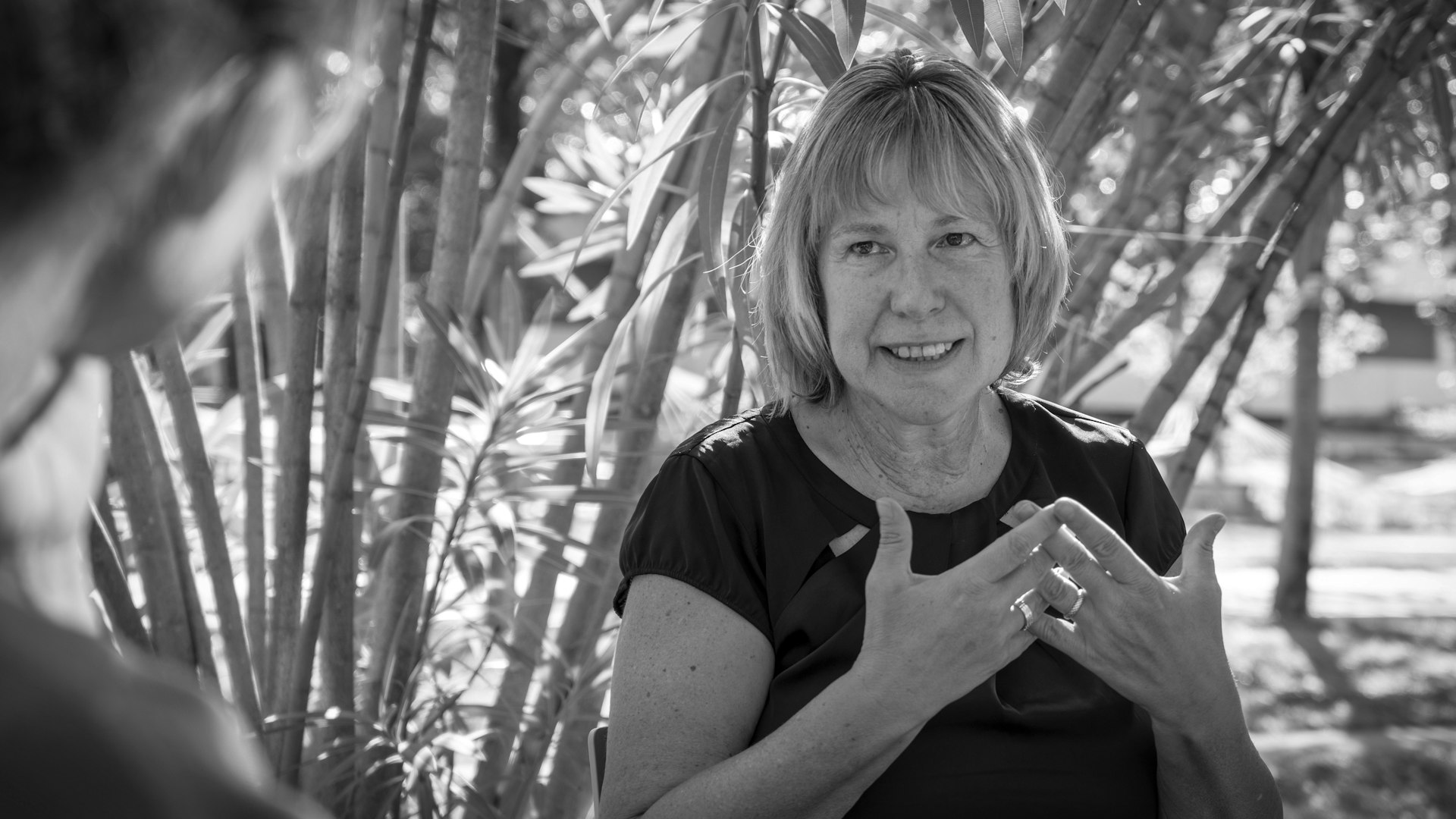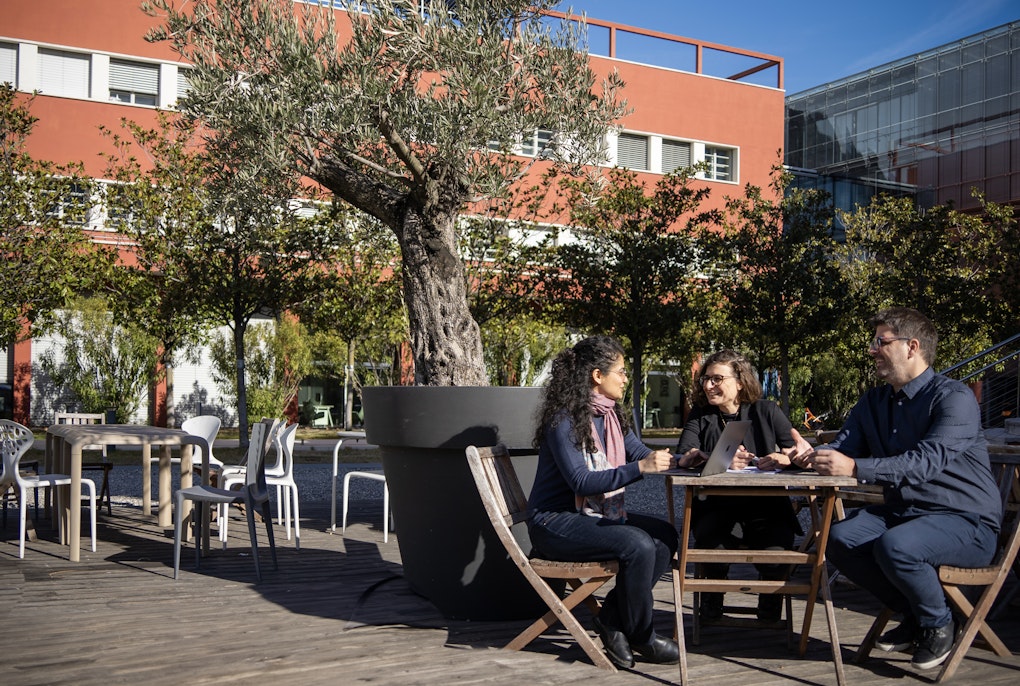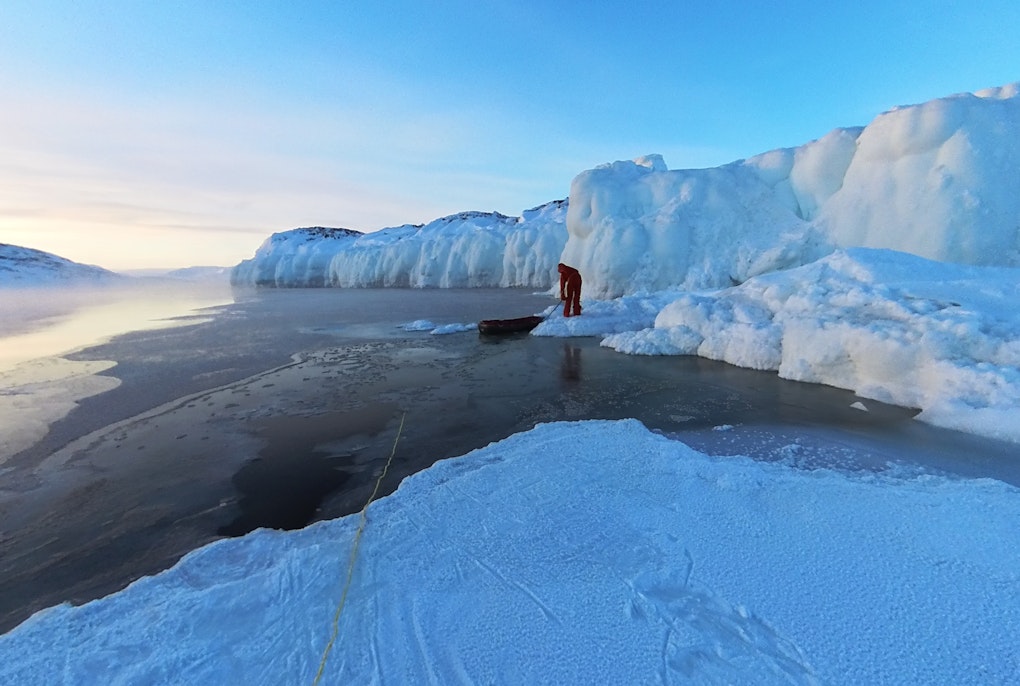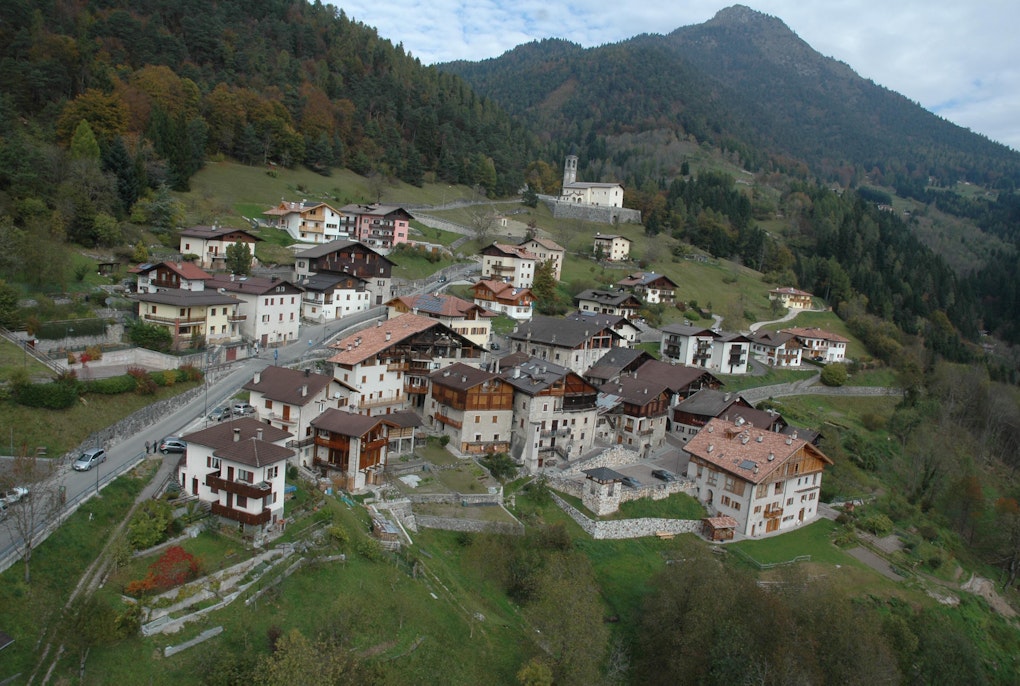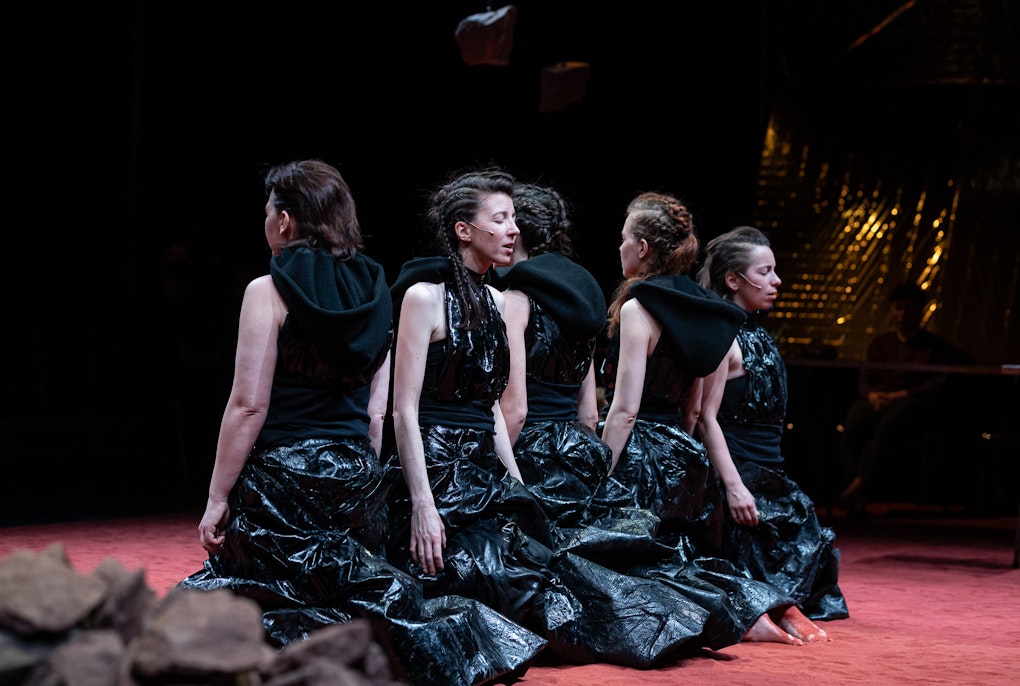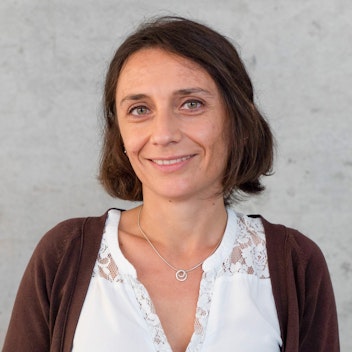magazine_ Interview
“Such a far-reaching Convention would not be signed today.”
On the 32nd anniversary of the Alpine Convention: a conversation with the Secretary General
Alenka Smerkolj has been Secretary General of the Alpine Convention since July 2019; she is the first woman to hold the position.
Photo: Annelie Bortolotti | Eurac Research
Slovenian Alenka Smerkolj took over the Permanent Secretariat of the Alpine Convention in 2019. The Convention establishes the sustainable development and the protection of the Alpine arc through various Protocols, in an interview, the current Secretary General explains what she sees as the Convention’s greatest achievement, which official visit left the biggest impression and why a Convention signed today would definitely be less ambitious.
32 years of the Alpine Convention, are there any places where the Alps would definitely be worse off without it?
Alenka Smerkolj: Without a doubt, climate protection. Even if it may not look like it from the outside: the term climate change doesn’t appear in the Convention because when it was drawn up, it was an area that garnered little merit. However, we have made enormous progress in this area in recent years and have agreed on very specific packages of measures. The other area is transport. Here, too, there is a concrete action plan, signed by the environment and transport ministers, to achieve a sustainable transport system. For example, it envisages by 2050 at the latest that the Alpine region should be pioneer in alternative mobility models through e.g. joint development, adoption, and implementation of national, regional, and local cycling and walking master plans.
Has any concrete damage actually been averted thanks to the Convention?
Smerkolj: Oh yes, there are several examples, a perfect one right here on our doorstep: the Alemagna was a project developed to connect Venice and Munich with a highway. The Transport Protocol of the Alpine Convention contains a clear statement on this. Article 11 sets that Contracting Parties must refrain from building new, large-capacity roads for transalpine transport. The Protocol has been in force since 2002 and is part of the EU law. However, the Veneto region brought the project back on the agenda at an EUSALP (EU Strategy for the Alpine Region) General Assembly meeting a few years ago. And this was not the first attempt to revive the idea of the Alemagna extension since a part of the highway, between Mestre and Belluno, already exists. So, as you can see, such projects pop up from time to time but because of the Alpine Convention they do not come to pass.
You once said: Such a far-reaching/extensive Convention would not be signed today. Were politicians more courageous back then?
Smerkolj: This is not a question of courage or fear; it was simply completely different circumstances at the time. In the early 1990s, there was a spirit of optimism which also extended to politics. People trusted that they could solve problems together. Some important global agreements were drawn up in those years, such as the Kyoto Protocol which was signed in 1997, to set binding targets for greenhouse gas emissions for the first time. As far as the Alpine Convention is concerned, it must nevertheless be said that its initiators were real visionaries. Who else was talking about sustainable development 32 years ago? Even in the year 2000, many people still didn't know what exactly was meant by it.
The Transport Protocol is now one of the Protocols that really has teeth, as we say: with these Protocols you can go to court and achieve something.
Alenka Smerkolj
On which points would agreement be more difficult today?
Smerkolj: Undoubtedly on energy and land use, where nature conservation and securing energy supply are at odds with each other. Just think of the difficulties that landscape and nature protection encounter when new windmills or new hydroelectric power plants are to be built. And of course on transport: the detail our Transport Protocol goes into would today no longer be possible. Even then, it was the most complicated of the Protocols and the negotiations dragged on for ten years. On the other hand, it is now one of the Protocols that really has teeth, as we say: with these Protocols you can go to court and achieve something. In contrast, the Protocol on tourism, for example, is softer and does not commit to much, everything within it is based on acting responsibly, on the Parties’ own free will.
Can the Alpine Convention be a concrete legal instrument on the subject of climate protection - even though, as you underlined, climate protection is not explicitly mentioned within its Protocols?
Smerkolj: Absolutely. Climate protection is a cross-sectional task, and many areas play a role here. If you read the protocols of the Alpine Convention, you will see that even if the term is not mentioned, climate protection (and adaptation) is actually anchored within it. And taken together, these Protocols - on nature conservation and landscape management, soil protection, transport, energy, etc. - are very strong. We have often discussed whether we should include climate protection directly in the Protocols. But that would mean renegotiating - and the result would certainly be weaker Protocols because today’s governments are currently unwilling to make strong commitments. Therefore, it has always seemed more prudent not to touch the Protocols and to work with what is there: in Austria, the expansion of a ski-lift facility was successfully prevented by invoking the Protocol on soil protection.
The importance of the Alpine Convention as a legal instrument is not particularly well known but when people, communities, or regions need it, it can be used to great effect.
Climate protection is firmly anchored in the Convention, even if the term itself is not used.
Alenka Smerkolj
In 2019, the Alpine Convention’s “Innsbruck Declaration” set itself the goal of becoming climate-neutral and climate-resilient by 2050: Can this be achieved?
Smerkolj: That is a question for the experts - some of whom say that complete climate neutrality cannot be achieved at all. What is certain is that we are making progress; what is equally certain is that it is happening far too slowly. Nevertheless, I am optimistic in the sense that I believe nature itself will force us to act much faster than we intended; after all, we have seen what has happened all over the Alps this year in terms of natural disasters such as land and mud slides and hailstorms as well as the heavy rains that caused rivers to burst their banks. But it’s up to all of us to act, it’s not just a matter of governments or investors: everyone has to decide for themselves which side they want to be on.
Mountain regions around the world are particularly affected by climate change - is it time for a global alliance?
Smerkolj: With every year in this position, I am more convinced that uniting voices is the only way. Fortunately, developments are moving in exactly that direction. In the Hindu Kush-Himalayan region, where the impact is being felt extremely acutely, climate change has brought together countries that are more or less all in open conflict with each other. The fact that countries like these can work together sounded like a dream to me when I first heard about it! A high-level working group is now in the process of establishing the basis of an institutional structure for exchange and cooperation. The idea is to discuss how to move forward in adaptation and prevent disasters. Last year, we had the great privilege of having this working group with representatives from different countries coming to us for a few days for a study visit, I felt like one of the luckiest people on earth at that time. They wanted to see how the Alpine Convention and the people behind it work as well as what challenges we face, what works in negotiations and what doesn’t. The accumulated experience of the Alpine Convention is very valuable for other mountain regions too.
Uniting the voices of the mountain regions is the only way forward.
Alenka Smerkolj
Can the Alpine Convention serve as a model for the states in the Hindu Kush-Himalayan highlands?
Smerkolj: Only as inspiration. Hindu Kush-Himalayan states will not sign a Convention; they are not ready for something that is so legally binding, but it does seem that they want to create an intergovernmental forum in the manner of the Arctic Council. We spent a vast amount of time helping them draft the documents. However, I think any agreement that the countries in the Hindu Kush Himalayas make will benefit not only them, but the entire planet.
As a minister, you prepared the national plan for sustainable development in Slovenia – did that help prepare you for your current task?
Smerkolj: I experienced quite a bit of disillusionment with it ̶ and that was precisely its greatest lesson. I learned how ministries work, or don’t. Even though the problems and challenges they face are so obviously related, so closely intertwined, that solutions can only be found together, this is often not done because the mentality is “each to their own”. This silo mentality prevents important progress in policymaking. At the time, I thought it was a Slovenian problem, but I now know that as soon as you move to the ministerial level, it’s the same everywhere. We urgently need to modernize our governance models and structures. Why not work on an issue-by-issue basis instead of by department, when every decision made by one department affects many others? I think this is where the greatest achievement of the Alpine Convention lies: recognizing how closely intertwined the challenges in the Alpine region are and therefore repeatedly bringing the different levels and sectors into conversation with each other to encompass voices from the regions and municipalities, civil society, civil servants, experts and lay people. Everyone is forced to talk to and listen to each other, because in the end we have to come to a decision together.
The Alpine Convention
The Alpine Convention is a binding international treaty for the protection of the Alps, not just their sensitive ecosystems but their cultural identities too. It was signed by the Alpine countries and the EU on November 7, 1991. The Framework Convention contains the guiding principles for sustainable living in the Alps, specific obligations are laid down in additional thematic Protocols. The Permanent Secretariat of the Alpine Convention is based in Innsbruck and has an operational branch office in Bolzano/Bozen, at the headquarters of Eurac Research. The office in Bolzano/Bozen coordinates the Convention’s Alpine-wide research activities and enables what Secretary General Alenka Smerkolj calls “direct contact with science”, also emphasizing the importance of the close exchange with Eurac Research expert teams in areas such as regional development, alpine environment, earth observation, as well as with the Center for Global Mountain Safeguard Research. The presidency of the Alpine Convention changes every two years; in 2023 Slovenia took it over and set three thematic priorities mirroring those of the Convention’s Multi-Annual Work Programme: climate change, biodiversity and quality of life. On the subject of quality of life, a comprehensive report on the state of the Alps is currently being prepared to improve living conditions in each of the different Alpine regions according to their specific needs. In 2025, Italy will take over the presidency. The topic of biodiversity will certainly remain central under the Italian guidance of the Alpine Convention, and a project proposal for an Alpine-wide biodiversity monitoring programme has in fact already been submitted, which will be coordinated by Eurac Research.
Alenka Smerkolj
Alenka Smerkolj graduated from the Faculty of Arts in the University of Ljubljana. For many years she was a Director in Slovenia's largest banking group, Nova Ljubljanska Banka, being responsible for the bank’s international activities and financial markets. From 2014, she was Minister of Development and Cohesion Funds in the Slovenian government. In July 2019, Smerkolj became the first woman to head the Permanent Secretariat of the Alpine Convention.
